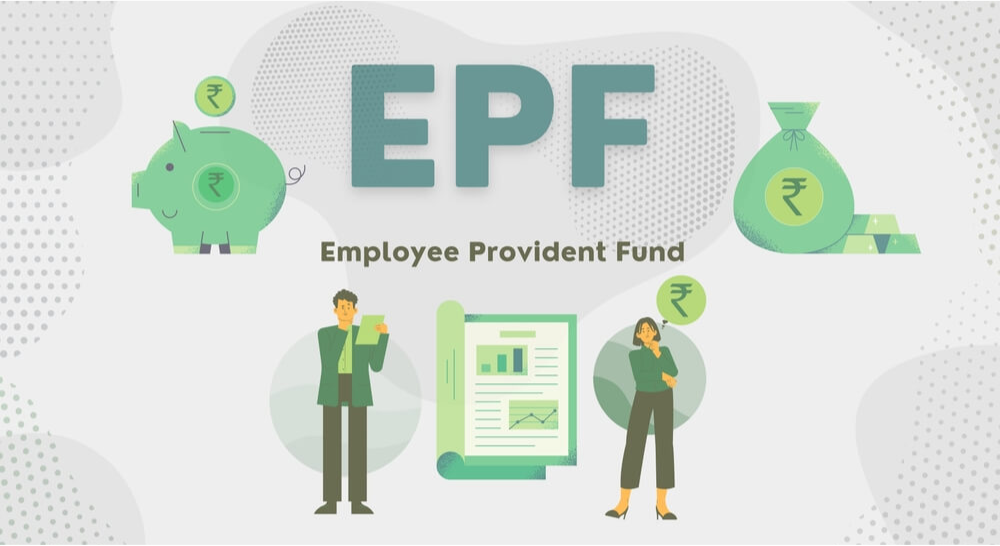 Last updated: October 16th, 2024 3:34 PM
Last updated: October 16th, 2024 3:34 PM
Section 40A(3A) of the Income Tax Act: Implications of Cash Transactions in Business
Under Section 40A(3) of the Income Tax Act, cash payments exceeding a specified limit are not allowed as deductible expenses. This provision encourages digital transactions and helps curb tax evasion. However, if a business initially fails to comply with this requirement, Section 40A(3A) offers a remedy. It allows businesses to reverse the disallowance by converting cash transactions into non-cash modes within a prescribed timeframe. Understanding these provisions is crucial for safeguarding a company’s financial compliance. In this article, we will delve into Section 40A(3A), exploring its corrective role, applicability, and impact on businesses striving for compliance.Section 40A(3A) of the Income Tax Act
Section 40A(3A) acts as a corrective mechanism for businesses that initially make cash payments exceeding the prescribed limits under Section 40A(3) but later convert these transactions into non-cash modes. This provision enables businesses to reclaim deductions for such expenses, provided specific conditions are met. Section 40A(3) typically disallows deductions for expenses paid in cash beyond the prescribed threshold to encourage transparent, traceable transactions. By promoting non-cash payments, these provisions aim to enhance tax compliance and discourage tax evasion. Also read: Section 194IA – TDS on Sale of PropertySection 40A(3) of Income Tax Act
This section aims to discourage businesses from making large cash payments by disallowing such expenditures as deductible business expenses if they exceed ₹10,000 per day per person (or ₹35,000 per day in the case of transporters).Comparison Between Section 40A(3) and Section 40A(3A) of the Income Tax Act
Here’s a comparison between Section 40A(3) and Section 40A(3A)| Aspect | Section 40A (3) | Section 40A (3A) |
| Purpose | Aims to discourage cash transactions to enhance traceability. | Provides relief by allowing deductions if cash payments are converted to non-cash modes. |
| Applicability | Triggered when a payment to a single person exceeds INR 10,000 in a single day. | This applies when disallowed payments under Section 40A(3) are corrected through non-cash modes such as account payee cheques, bank drafts, or electronic clearing systems. |
| Impact of Conversion | Conversion to non-cash mode has no impact on the applicability of this section. | To claim deductions, the conversion must occur within the same financial year or before the due date of ITR filing. |
| Documentation Requirements | Requires basic documentation for the initial cash payments. | Requires detailed documentation for both the initial cash payment and subsequent conversion to non-cash mode. |
When Does Section 40A(3A) of the Income Tax Act Become Applicable?
Section 40A(3A) of the Income Tax Act comes into effect under specific scenarios, allowing taxpayers to correct previously disallowed deductions due to cash payments that exceeded the prescribed limits. This section provides a remedy for non-compliance, encouraging businesses to switch to non-cash modes of payment.Conditions for Applicability of Section 40A(3A)
- Initial Cash Payment Exceeding the Limit: The provision applies when a taxpayer makes a cash payment exceeding INR 10,000 to a single party on a single day, as defined under Section 40A(3). Since these payments breach the allowable cash transaction limit, they are disallowed initially.
- Conversion to Non-Cash Mode: To benefit from Section 40A(3A), the business must convert the initial cash payment into a non-cash mode. Acceptable modes include payments made through an account payee cheque, account payee bank draft, or electronic clearing system (ECS) via a bank account.
- Timely Conversion: The conversion from cash to a non-cash mode must be completed within the same financial year the cash payment occurred. Alternatively, it must be done before the due date to file the income tax return for that financial year. This timeline ensures timely compliance and aligns with tax regulations.
Example of Section 40A(3A) Application
Let’s explore a practical scenario to understand how Section 40A(3A) operates:- Scenario: In June, a business makes a cash payment of INR 25,000 to a supplier for goods purchased. This payment exceeds the INR 10,000 per day limit set under Section 40A(3), leading to the disallowance of the expense as a deduction in the company's financial statements.
- Corrective Action: In November of the same financial year, the business rectifies the transaction by issuing an account payee bank draft for INR 25,000 to the supplier.
- Outcome: Since the conversion from cash to non-cash mode was completed within the same financial year, Section 40A(3A) allows the business to claim INR 25,000 as a deductible expense, reversing the earlier disallowance.
Permissible Modes of Payment under Section 40A(3A)
Section 40A(3) of the Income Tax Act, 1961 outlines specific payment methods that avoid disallowance of expenses. These provisions encourage businesses to minimize cash transactions and adopt more transparent and traceable modes through banking channels. Below are the accepted modes of payment that ensure compliance with Section 40A(3) requirements:- Account Payee Cheque: Payments are made via cheques drawn on the payer’s bank account and payable exclusively to the payee’s account, ensuring traceability and security.
- Account Payee Bank Draft: Similar to cheques, bank drafts guarantee that the payment directly reaches the payee’s account, providing a clear audit trail.
- Electronic Clearing System (ECS): ECS payments are electronic transfers routed directly to the payee’s account, offering a transparent and trackable payment method.
- Online Bank Transfers (NEFT, RTGS, IMPS): These electronic banking channels ensure immediate or scheduled transfers, with detailed records maintained by banks for future reference.
- Debit Card: Transactions made via debit cards are traceable and linked directly to the payer’s bank account, ensuring payment records are maintained.
- Credit Card: Payments made via credit cards offer a reliable record of transactions, even though the credit provider facilitates the payment.
- Mobile Wallets/UPI (Unified Payments Interface): With the rise of digital payments, mobile wallets or UPI transactions are also valid, provided they are traceable and documented with proper transaction details.
How Section 40A(3A) Shapes Business Practices
Grasping the impact of Section 40A(3A) is essential for businesses to maintain compliance and optimize financial management. Here’s how this provision influences various aspects of business operations:Promotes Banking Channel Usage
Section 40A(3A) motivates businesses to move away from cash transactions, encouraging the use of formal banking methods like account payee cheques and electronic transfers. This shift enhances documentation, ensuring transparency and traceability of transactions, which is critical for audits and tax assessments.Mitigates Tax Burden
While cash payments exceeding ₹10,000 are initially disallowed as deductible expenses, businesses can reclaim these deductions by converting them into non-cash payments within the same financial year. This provision helps reduce taxable income, thereby easing the tax burden on businesses.Improves Regulatory Compliance and Audit Preparedness
Embracing non-cash transactions ensures businesses remain aligned with tax regulations and are well-prepared for audits. Compliance with Section 40A(3A) minimizes the risk of penalties and interest, supporting smooth operations and regulatory approval.Enhances Financial Organization
The requirement to shift from cash to documented banking transactions fosters disciplined financial management. Businesses benefit from improved cash flow monitoring, budgeting, and forecasting, making operations more efficient and organized.Aligns with the Government’s Digital Economy Goals
Section 40A(3A) aligns with government efforts to reduce cash-based transactions and combat tax evasion. By discouraging large cash payments and offering opportunities to rectify non-compliant transactions, businesses can contribute to a transparent economy and align with national financial reforms. By following the requirements of Section 40A(3A), businesses can ensure compliance, manage tax liabilities efficiently, and foster long-term growth through organized financial practices.Practical Challenges and Key Considerations for Implementing Section 40A(3A)
Navigating the provisions of Section 40A(3A) presents some practical challenges for businesses. Here are the key factors to keep in mind:- Increased Administrative Workload: Although Section 40A(3A) provides a mechanism to correct cash transaction errors, tracking and converting these transactions to non-cash methods demands significant administrative effort. Businesses need robust systems to ensure every eligible transaction is appropriately documented and converted on time.
- Strict Timeframe for Compliance: The provision requires that cash payments be converted to non-cash transactions within the same financial year or before the due date for filing the income tax return. This strict timeline can create challenges, particularly for businesses that handle frequent cash transactions, requiring constant monitoring to avoid disallowance.
- Training and Awareness for Finance Teams: To leverage Section 40A(3A) effectively, businesses must ensure that their finance and accounting teams are thoroughly familiar with the rules and deadlines. Without proper training, companies risk missing out on valuable deductions and tax-saving opportunities due to non-compliance or mismanagement of transactions.
Conclusion
In summary, Sections 40A(3) and 40A(3A) of the Income Tax Act encourage businesses to reduce cash payments and follow transparent, non-cash transaction methods. Section 40A(3) limits cash payments as deductible expenses, but Section 40A(3A) provides a way to correct non-compliant payments by converting them into approved modes like account payee cheques or digital transfers. Using these methods ensures better financial management, compliance, and audit readiness. Although managing these requirements may seem challenging, proper planning and staff training can ease the process. Aligning with these rules helps businesses lower tax burdens, support digital initiatives, and achieve sustainable growth.Popular Post

In the digital age, the convenience of accessing important documents online has become a necessity...

The Atalji Janasnehi Kendra Project that has been launched by the Government of Karnataka...

The Indian Divorce Act governs divorce among the Christian couples in India. Divorce...

When an individual has more than a single PAN card, it may lead to that person being heavily penalised, or worse,...

Employees Provident Fund (PF) is social security and savings scheme for employee in India. Employers engaged...


